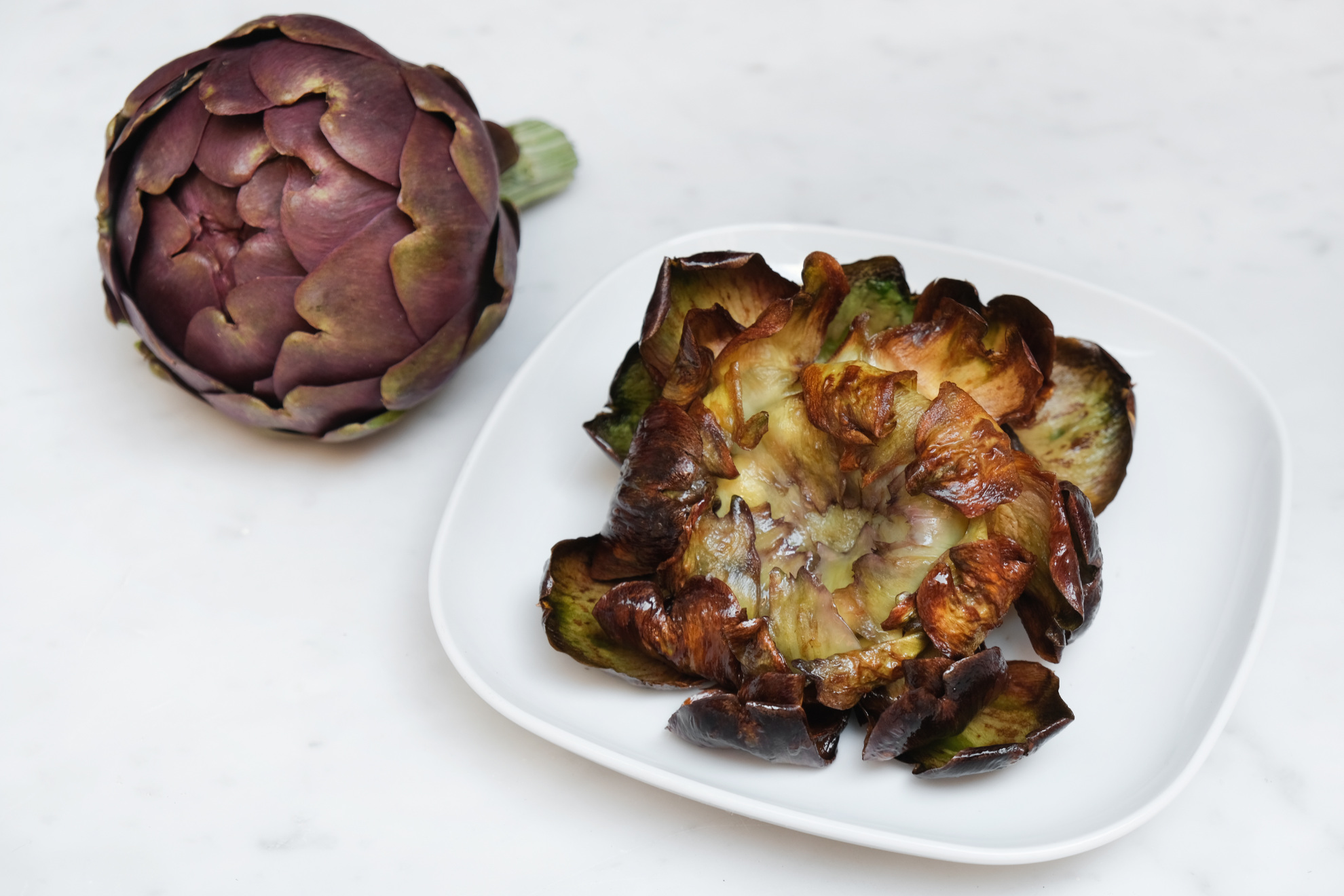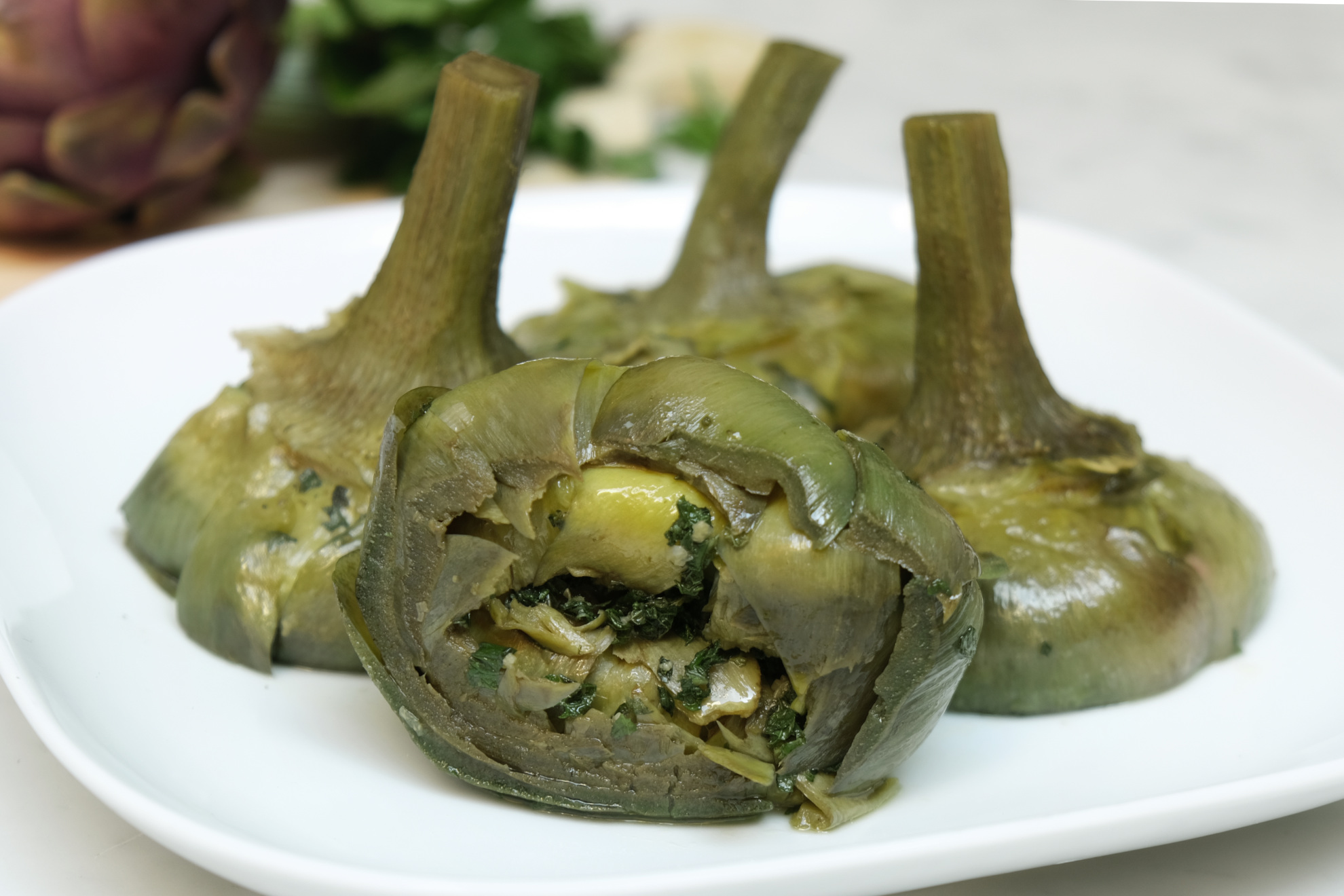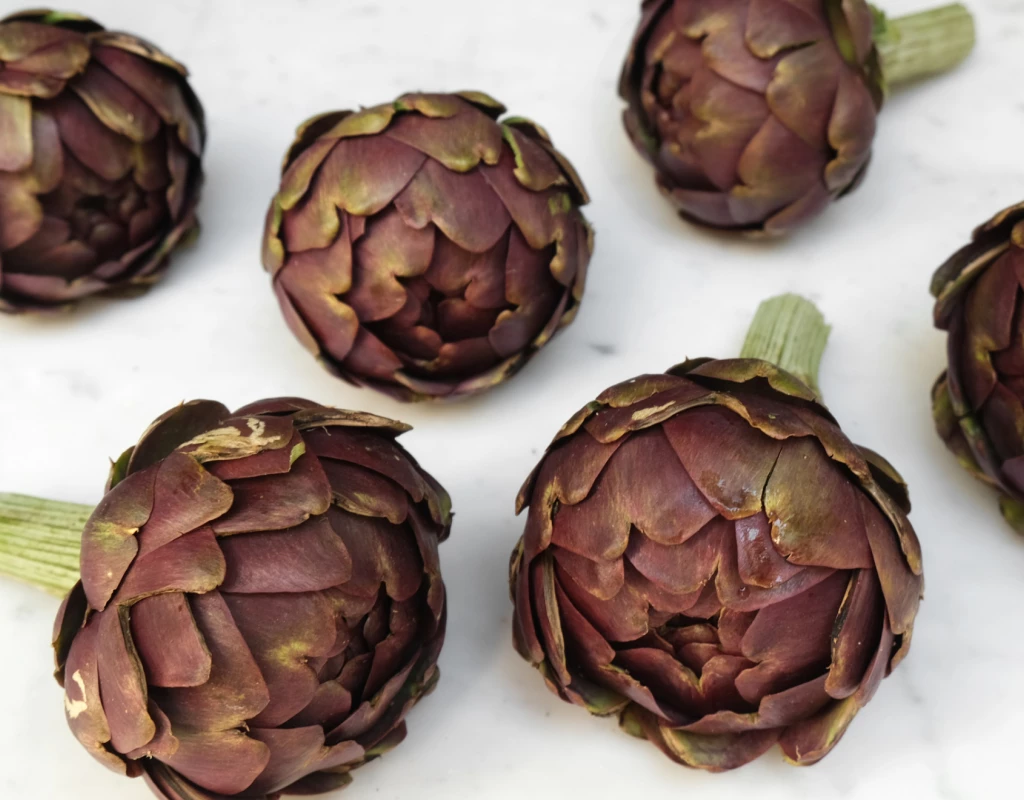«Thick, purple flowers that have a single stem». Thousands of years have passed since in his book “Naturalis Historia” Pliny the Elder described the varieties of artichokes present at the time.
And he also wrote about all the beneficial properties of this vegetable: refreshing for the breath, therapeutic for alopias, excellent digestive as well as - quoting the author's words - stimulant «for the conception of male children».
Whether the artichoke is actually useful for this latter purpose is debatable, but certainly even today, after centuries, this herbaceous plant is still highly appreciated throughout Italy. In Rome, in particular, it was the first Italian product to be protected with the European IGP mark (protected geographical indication): the Roman artichoke, in fact, also known as cimarolo or mammola.
Ph. Carolina Fragapane

With a rounded and slightly compressed shape, very compact and with a color ranging from green to violet, the Roman artichoke is grown mostly in the area of the Lazio coast, from Cerveteri to Ladispoli, forty kilometers north of Rome. In this area fields are rich in iron oxide, a crucial molecule for the regular growth of the artichoke, which is also responsible for the slightly “ferrous” taste of this vegetable. Harvesting is generally by hand, begins in March and then usually continues until mid-May.
Ph. Carolina Fragapane

Over the years, the artichoke has become an authentic symbol of Roman cuisine. Any tavern in the city or around where you can eat local cuisine has the Jewish or Roman artichoke on the menu.
The first, so defined because it is a typical recipe of the Jewish population of Rome, is fried whole in boiling oil and seasoned with an abundant dose of salt; the second is prepared in a pan with high sides and stuffed with parsley, mint, garlic, extra virgin olive oil and a pinch of lemon.

